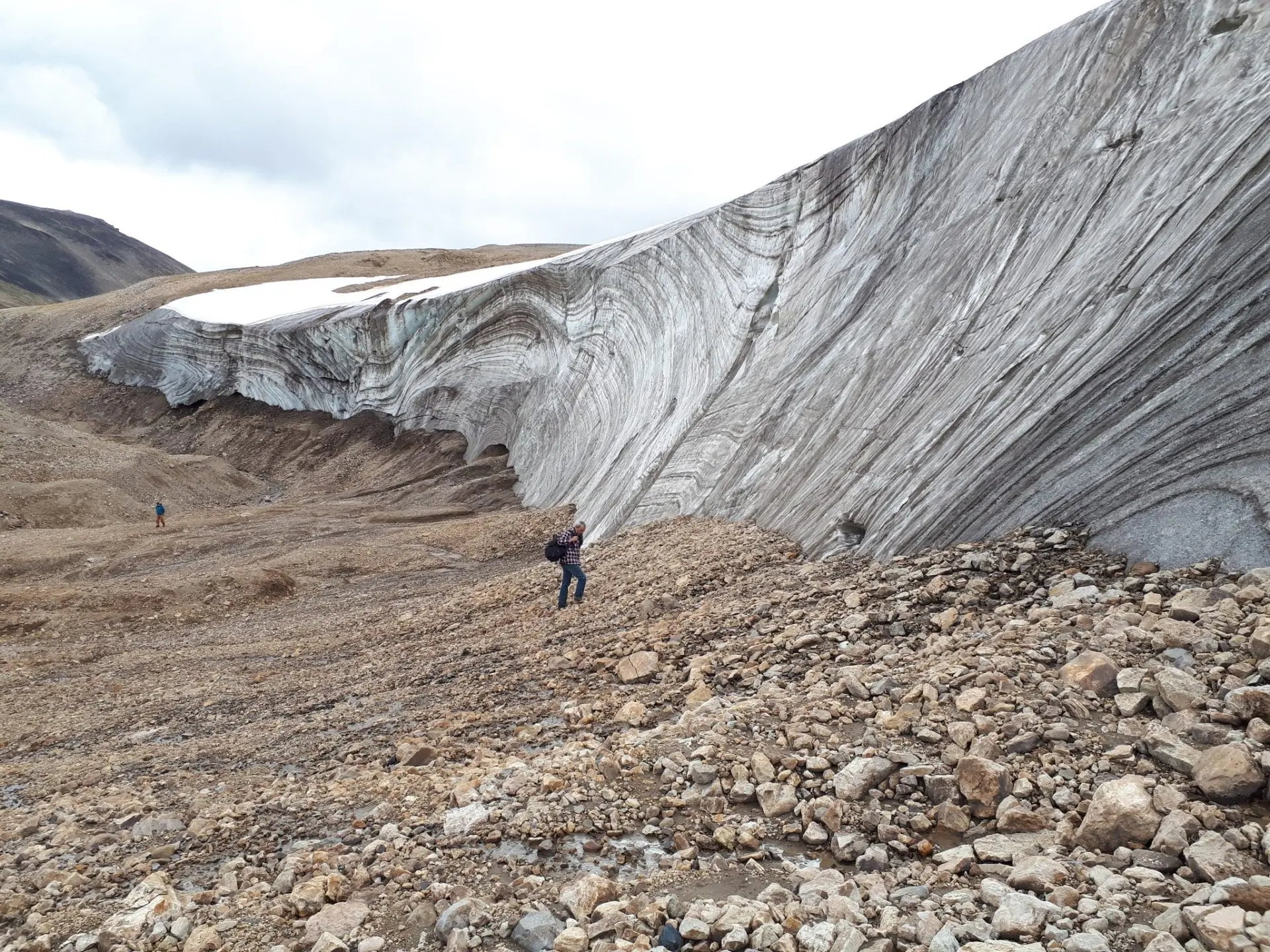Archaeologists conducting surveys of retreating ice patches have found perishable artefacts associated with ancient mining activities.
The study, published in the Journal of Field Archaeology, reports that the researchers have found over 50 perishable artefacts near Goat Mountain and the Kitsu Plateau, located in northern British Columbia, Canada.
Among the artefacts are stitched containers made from birch bark, wooden walking staffs, intricately carved and beveled sticks, an atlatl dart foreshaft, and a boot crafted from stitched hide.
According to the researchers: “Most of the perishable artefacts were manufactured from wood, including birch bark containers, projectile shafts, and walking staffs. Of the pieces of wood found, most had evidence of being worked or used.”
Items fashioned from animal remains include a stitched hide boot and tools carved from antler and bone. Additionally, unaltered bones were discovered, possibly attributable to natural deposition processes.
Such finds normally perish after becoming exposed from the ice, however, the researchers examined satellite imagery, followed by surface inspections, to locate perishable artefact sites for recovery and controlled conservation.
Carbon dating of the artefacts indicate a wide variance between each of the ice patch sites. At site HiTq-13, the researchers found four perishable artefacts which indicate a date of between 3000–1500 years ago. In contrast, site HiTq-17 indicates a date of 6200–5300 years ago, while site HiTq-18 indicates a date of 6900–6750 cal bp.
Every perishable artefact site is amidst a landscape abundant with millions of obsidian nodules, flakes, cores, preforms, and various tools, suggesting that the perishable artefacts are associated with ancient mining activities. However, hunting activities were also evident in the area, demonstrated by the presence of an atlatl foreshaft, a wooden point, and a potential fragment of an atlatl board.
Obsidian is a naturally occurring volcanic glass that forms when lava expelled from a volcano rapidly cools. Obsidian is hard, brittle, and amorphous; it therefore fractures with sharp edges, making it valued by Stone Age cultures for tool and weapons manufacturing.
According to the paper authors: “The results of this study are unique in that it is extremely rare to find ancient perishable artefacts in association with alpine quarries. Finally, the vast obsidian quarries and the radiocarbon dates on the associated perishable objects provide evidence that obsidian mining has been practiced repeatedly in the Mt. Edziza area for multiple millennia.”
https://doi.org/10.1080/00934690.2023.2272098
Header Image Credit : Duncan McLaren





